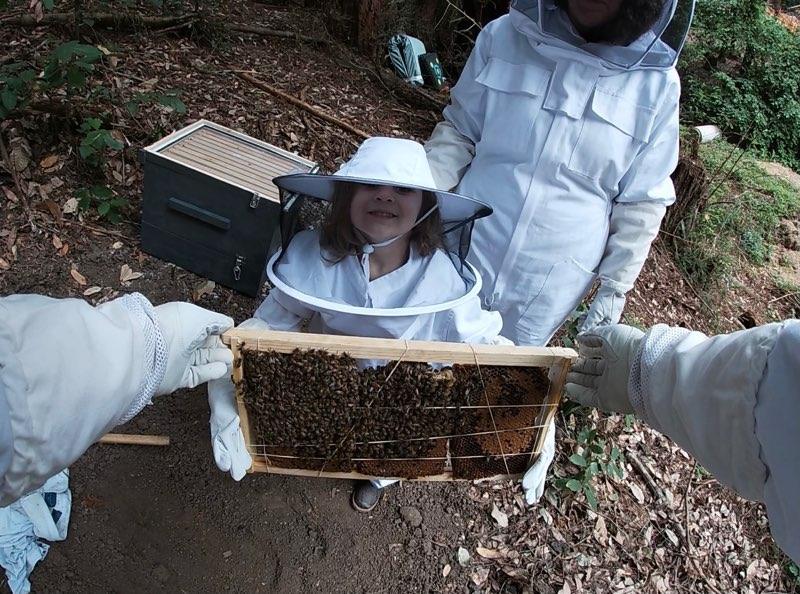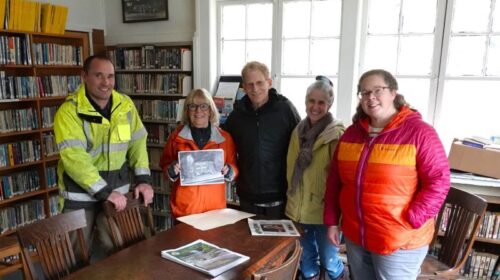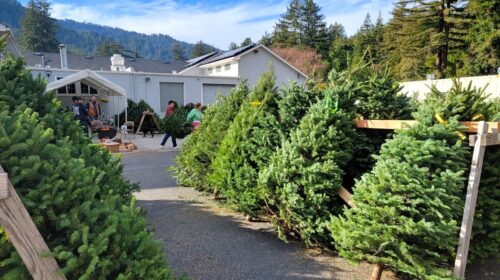Ben Lomond’s Bee Wrangler
Redwood Mountain Honeybee Rescue Keeps the Peace
By Julie Horner
In June, Redwood Mountain Honeybee Rescue was called to a home behind the gas station in Ben Lomond. Nesting honey bees had found entry through a small hole into an exterior wall of a workshop at a private residence. Using thermal imaging, owner and beekeeper David Clark was able to determine exactly where the hive was located. With a sheetrock cutter and hand tools, he carefully removed a section of the wall to expose the hive. Two liver-shaped combs were attached to the studs within the wall and were thrumming with activity. With a vacuum designed specifically for bee removal, Clark gently sucked the bees off the combs and into a box for safekeeping until they could be moved to a hive box to continue their work. Clark then cut the combs out with a knife.
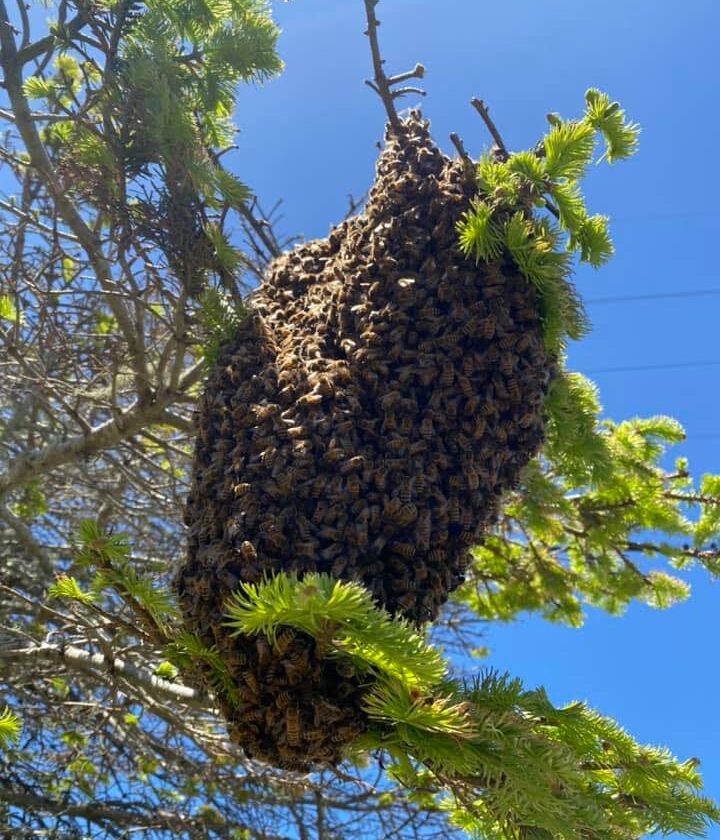
Finding a beehive in your home is not uncommon and it can happen any time of year. Clark has been rescuing and relocating bees for about five years. He got his start late one night on YouTube. “I saw a video of some people keeping bees and said, I’m going to do that.” The next day he went out and bought some equipment to get started. He moved from San Luis Obispo to Ben Lomond in January 2021 and noticed there were few local resources for hive removal.
He’s been busy ever since. So far he’s had a couple of honeybee “cut-outs” in Ben Lomond and a yellow jacket removal in Boulder Creek. The honeybees are relocated to hive boxes on his property. He’ll remove yellow jacket hives, too, but the job is more expensive. They’re wasps, he explained, and can sting through his suit. Pain has a price point.
New bees are born every day, Clark said, and they run out of space in the hive. During the process of swarming, whether in a beekeeper’s hive or a natural hive, the queen and a third to half of the population in the hive will leave to find another place to live. “Sometimes there’s a hole in the side of your house, up in your eaves, or a soffit or something.” The scout bees find the hole, decide it’s a good place to bring the other bees, and they’ll leave a pheromone, which has a chemical structure similar to lemongrass, to mark the spot. All the bees will then move to that hole in the wall, or a hole in a tree, and start to build a new home.
Clark has just started the business in the Santa Cruz Mountains and will go all the way down to Monterey. He owns a couple of acres in Ben Lomond, he said, and maintains half a dozen hives. He’ll give hives filled with rescued bees to people looking for hives. If a fellow beekeeper has an empty box, he’ll try to fill it up for them. He’s had several requests for hives in the Santa Cruz Mountains and down in San Luis Obispo on property owned by his family. “Between here and there, I try to stay pretty busy,” he said.
The largest swarm Clark ever removed was the size of a big watermelon, he said. The biggest cut-out was a floor-to-ceiling nest within a wall in the Santa Cruz Mountains earlier this summer. “There was about 110 lbs of honey inside that hive. It was monstrous,” he said. It took him five hours to complete the rescue “from the time the saw hit the wall to the time I was actually done removing the comb.” Clark estimated that the bees had been there for about five years. Sometimes he keeps the honey, which is what he did in this case. The bees were moved to hives in San Luis Obispo County.
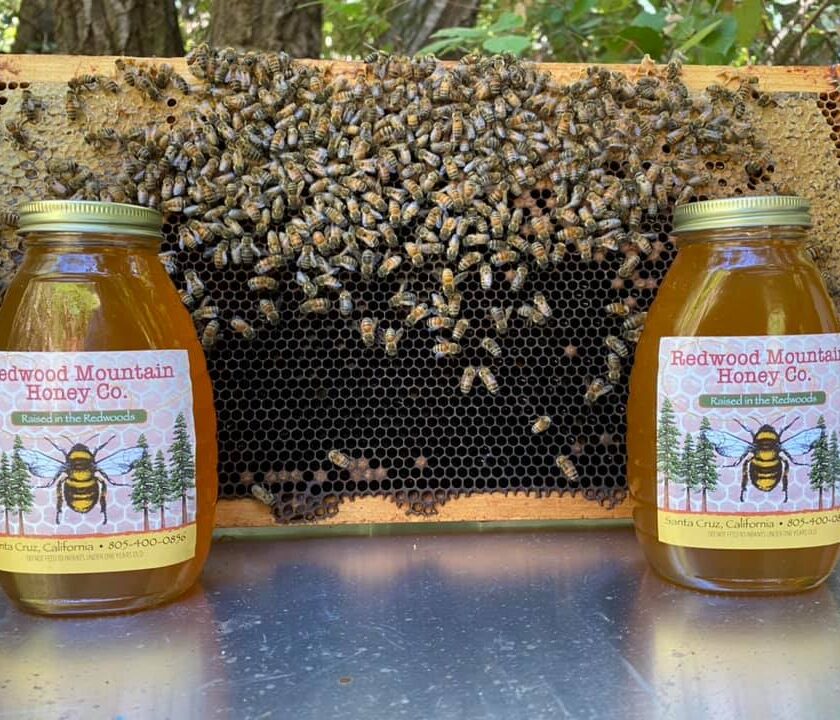
Dedicated to honeybee hive removal and relocation, Redwood Mountain Honeybee Rescue protects bees by swarm-catching, performing bee cluster cut-outs, and relocating bee activity.
Facebook: @RedwoodMountainHoneybeeRescue
Instagram: @redwood_mountain_honey_co
Featured photo: David Clark’s daughter helping with the family business
Photos contributed by David Clark

